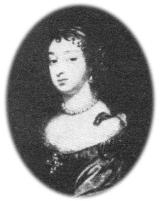Who dated William III of England?
Elizabeth Hamilton, Countess of Orkney dated William III of England from ? until ?.
William III of England

William III and II (William Henry; Dutch: Willem Hendrik; 4 November 1650 – 8 March 1702), also known as William of Orange, was the sovereign Prince of Orange from birth, Stadtholder of Holland, Zeeland, Utrecht, Guelders, and Overijssel in the Dutch Republic from 1672, and King of England, Ireland, and Scotland from 1689 until his death in 1702. He ruled England, Scotland, and Ireland with his wife, Queen Mary II, and their joint reign is known as that of William and Mary.
William was the only child of William II, Prince of Orange, and Mary, Princess Royal, the daughter of King Charles I of England, Scotland, and Ireland. His father died a week before his birth, making William III the prince of Orange from birth. In 1677, he married his first cousin Mary, the elder daughter of his maternal uncle James, Duke of York (later King James).
When the Dutch Republic was attacked by Louis XIV of France in 1672, William rose to power and became Louis's greatest obstacle. He made it his life's mission to oppose Louis and waged many campaigns against the armies of the powerful Catholic French ruler. Many Protestants heralded William as a champion of their faith. In 1685, his Catholic uncle and father-in-law, James, became king of England, Scotland, and Ireland. James's reign was unpopular with Protestants in the British Isles, who opposed Catholic Emancipation. Supported by a group of influential English political and religious leaders, William invaded England in the Glorious Revolution. In 1688, he landed at the south-western English port of Brixham; James was deposed shortly afterward.
William's reputation as a staunch Protestant enabled him and his wife to take power. During the early years of his reign, William was occupied abroad with the Nine Years' War (1688–1697), leaving Mary to govern the three kingdoms alone. She died in 1694. In 1696 the Jacobites, a faction loyal to the deposed James, plotted unsuccessfully to assassinate William and restore James to the throne. In Scotland, William's role in ordering the Massacre of Glencoe remains notorious. William's lack of children and the death in 1700 of his nephew the Duke of Gloucester, the son of his sister-in-law Anne, threatened the Protestant succession. The danger was averted by placing William and Mary's cousins, the Protestant House of Hanover, in line to the throne after Anne with the Act of Settlement 1701. Upon his death in 1702, William was succeeded in his kingdoms by Anne and as titular Prince of Orange by his cousin John William Friso.
Read more...Elizabeth Hamilton, Countess of Orkney

Elizabeth Hamilton, Countess of Orkney (née Villiers; 1657 – 19 April 1733) was an English courtier from the Villiers family and the reputed mistress of William III, King of England and Scotland, from 1680 until 1695. She was a lady-in-waiting to his wife and co-monarch, Queen Mary II of England.
Read more...